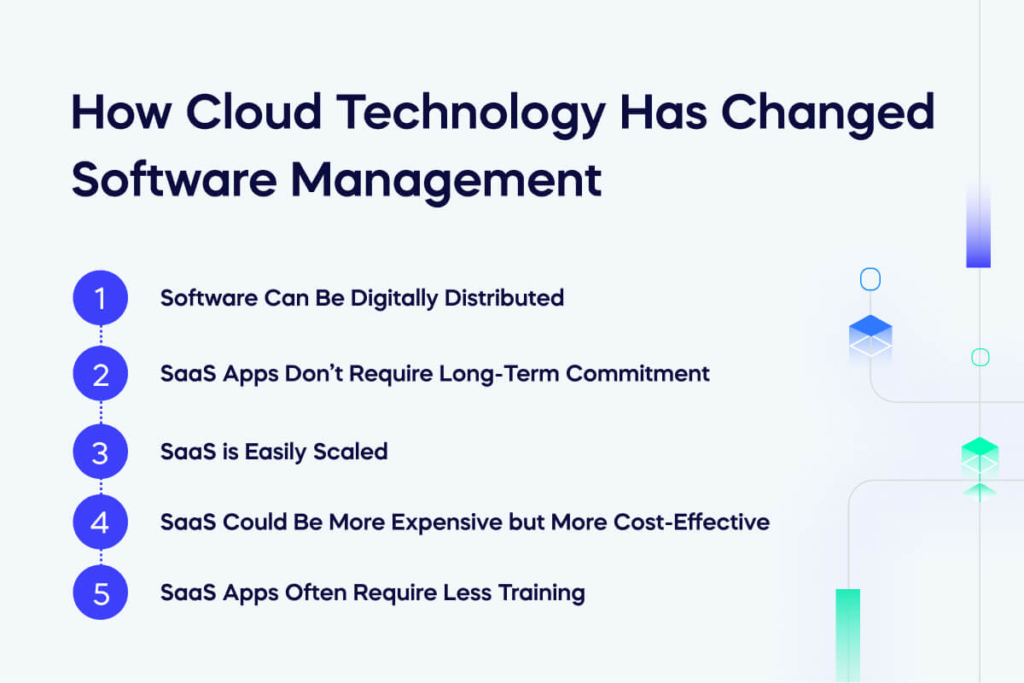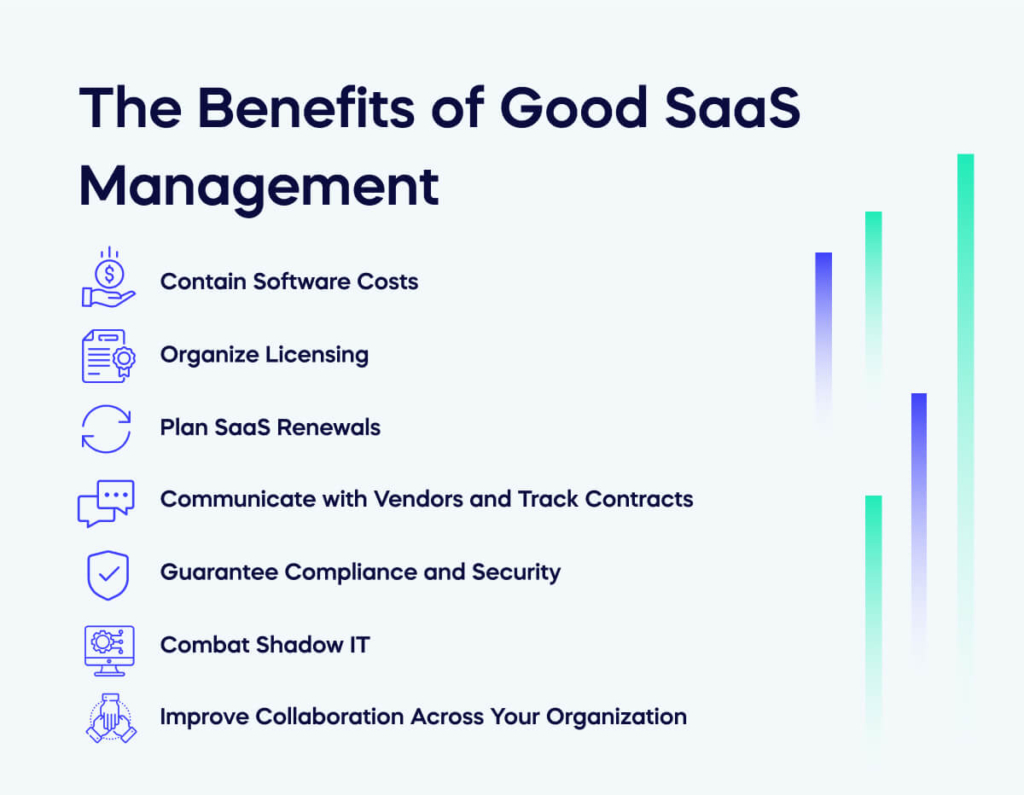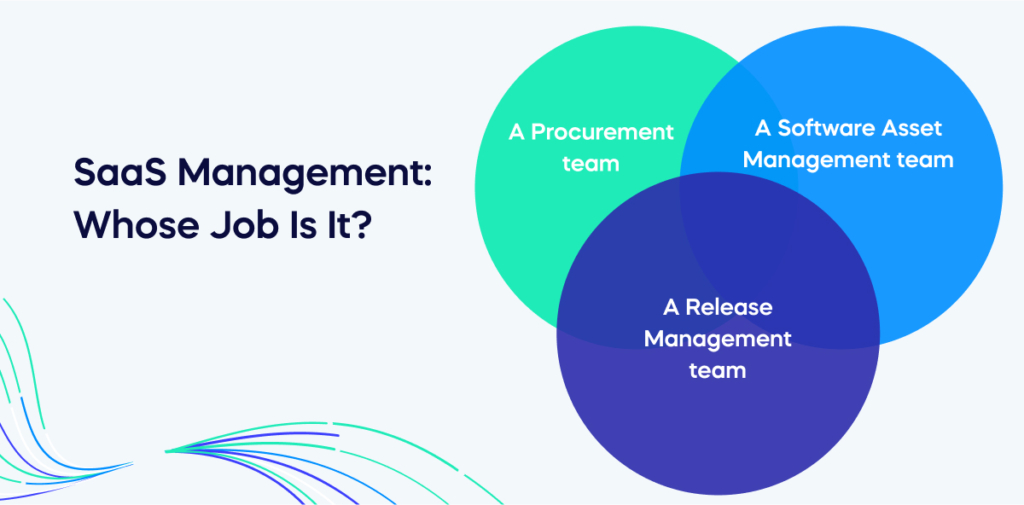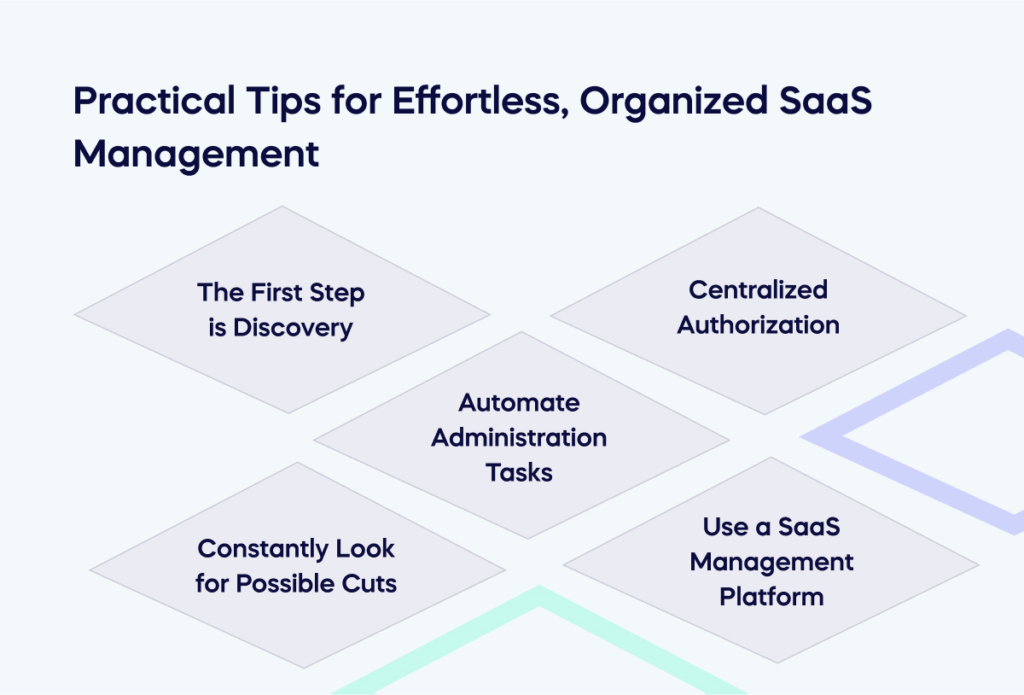Software as a Service (SaaS) is a booming industry.
According to McKinsey, the global SaaS market is worth about $3 trillion and is estimated to surge to $10 trillion by 2030.
SaaS is a result of major digital transformation within the software industry— to be specific. It’s a result of a business model transformation. It’s safe to say we’ve come a long way from how we distributed and managed commercial off-the-shelf software (COTS).
There’s no doubt that SaaS applications enhance your experience as a business customer tenfold. But implementing SaaS tools is only the start of the battle. With the rocketing popularity of the SaaS business model comes a need for robust, organized SaaS management.
In this article, we will talk about what made SaaS such an attractive solution in the first place and all its impressive benefits.
We will also cover the basics of SaaS management, so you’ll know what it is and how to begin setting up your own SaaS management infrastructure. From helping increase efficiency to reducing IT bottlenecks, there is no shortage of reasons to invest in a robust SaaS management system.
We won’t leave you with only the theory, though. We’re also giving you practical tips to take your SaaS management to the next level.
What is SaaS Management, and Why is it Important?
SaaS Management is the process of administering and controlling the SaaS applications used by your business.
SaaS management has become popular in the digital age, with more businesses adopting cloud-based software solutions.
With SaaS Management, you can streamline your software procurement process, keep track of usage data, and manage subscriptions more efficiently.
But SaaS management is not just about managing applications; it’s about making informed business decisions based on data-driven insights.
Implementing effective SaaS Management practices ensures you’re getting the most out of your software investments.
The bottom line is that SaaS management is now essential for every digital-first business. You may be wondering why SaaS applications are worth all the fuss. If COTS software wasn’t broken, why fix it?
How Cloud Technology Has Changed Software Management

Cloud technology is the underlying technology that has enabled the SaaS industry to swell to its size.
But what exactly are the benefits of SaaS to you, the consumer?
Software Can Be Digitally Distributed
SaaS applications are hosted in the cloud, meaning you can access them from any device with an Internet connection.
You no longer need to install software on individual computers or servers— everything is accessible via a secure URL.
This saves time and reduces the amount of hardware and software you need to manage.
SaaS Apps Don’t Require Long-Term Commitment
With traditional COTS software, you’re committing to a long-term contract with stipulations if you want to opt out.
With SaaS applications, you can pay as you go or cancel anytime.
This allows you to try out applications without committing to long-term contracts.
SaaS is Easily Scaled
Thanks to the cloud, SaaS applications can be quickly scaled up or down depending on your needs.
This means you can only pay for what you need at that time.
It’s a much more efficient way of working, allowing you to optimize your business’s software investments.
SaaS Could Be More Expensive but More Cost-Effective
SaaS applications tend to be pricier than COTS software, but the extra benefits of the SaaS model offset this.
As we’ve said, you don’t need to commit to long-term contracts and can scale up or down as needed. This can make SaaS apps more cost-effective in the long term.
SaaS Apps Often Require Less Training
Because SaaS applications are hosted in the cloud, updates are often automated, and users don’t have to worry about manually downloading patches.
This allows developers to make minor quality-of-life or ease-of-use changes on the fly.
The result is that the need for employee training is reduced, and your users can start using the application almost immediately.
The Benefits of Good SaaS Management

Okay, so SaaS applications are worthwhile. What about SaaS management? Is it really necessary?
Here’s a list of some of the top benefits of SaaS management:
Contain Software Costs
Good SaaS management can help you get the most out of your software investments by providing insights into what applications are being used and by whom.
This can help you identify opportunities to reduce costs and make better purchasing decisions.
Organize Licensing
With SaaS Management, you can track license agreements and ensure you have the right number of users per application.
This will help you avoid overspending on unused licenses and ensure all your software is properly licensed.
Plan SaaS Renewals
With SaaS Management tools, you can set up alerts to remind you when subscriptions are due for renewal so you don’t miss out on important contractual terms or extra features.
Communicate with Vendors and Track Contracts
You can also use SaaS management tools for vendor management.
They make it easier to communicate with your vendors, keep updated with contracts, and get news of new service offerings.
Guarantee Compliance and Security
Poorly managed SaaS applications could be vulnerable to security threats or non-compliance with industry regulations.
According to IBM, the average data breach cost is $9.44 million in the United States. It’s a punishing mistake to make.
A good SaaS management system can help you ensure that your applications comply with industry regulations and keep your data safe from cyber threats.
Combat Shadow IT
SaaS management can also help to combat “shadow IT” (more on this later) by providing visibility into which applications are being used in your organization and for what purpose.
Improve Collaboration Across Your Organization
Finally, SaaS management can improve collaboration across your organization by providing insights into which applications are being used and how.
This will give you insight into which applications are working well for different teams and allow you to make better decisions about which SaaS apps best suit each of your needs.
How Does SaaS Management Help Fight shadow It?
Shadow IT is defined as using unapproved applications and devices in an organization, often without the knowledge or consent of IT security personnel.
This often happens when employees try to find a quick solution to a problem and download software off the internet that your organization hasn’t approved.
The problem with Shadow IT is that it can introduce risk into your organization since these applications haven’t been tested and could be insecure or non-compliant.
SaaS management can help you identify shadow IT by providing visibility into which apps are used in your organization and for what purpose. This allows you to take steps to ensure your employees aren’t using any unauthorized applications that could pose a threat to your data and compliance.
SaaS Management: Whose Job Is It?

Ultimately, it depends on the size of your organization and the complexity of the applications you use.
In small businesses, IT staff might be responsible for managing SaaS applications. For larger organizations, an entire team of people may be dedicated to SaaS management.
The largest corporations balance the responsibilities of SaaS management between:
- A Software Asset Management team.
- A Procurement team.
- A Release Management team.
In any case, it’s important to ensure that your SaaS management team is well-equipped with the tools and knowledge necessary to manage your applications effectively.
Practical Tips for Effortless, Organized SaaS Management

Now that we have some background on SaaS management let’s dive into the practical steps you can take to ensure your software is properly managed and organized.
The First Step is Discovery
Software discovery is identifying all the applications used in your organization. This involves taking an inventory of all applications and understanding how your employees use them.
Throughout the discovery process, you should aim to answer questions like:
- What software do you currently have in your business?
- Who uses it?
- For what purposes?
- What SaaS applications are on the market that could be a better solution?
You can use SaaS management tools to automate the software discovery process, saving you time and energy in the long run.
Centralized Authorization
Once you’ve identified all the applications people in your organization are using, you must centralize authorization for those applications.
That means determining who has access to each application and ensuring only authorized users can use them.
Then, make sure all software requests go through the same team.
Automate Administration Tasks
You could automate much of the SaaS management process.
An automation strategy is the key to taking your SaaS management to the next level. There are many manual, administrative elements to SaaS management that are excellent candidates for automation initiatives.
Discovery, budget tracking, updates, processing software requests— with an automation platform, you could take all of this and more off your plate.
Constantly Look for Possible Cuts
It’s also important to constantly look for opportunities to reduce software spend.
This can be done by evaluating your applications and looking for redundant or unused tools that can be removed.
You may also be able to negotiate better rates with vendors for more frequently used applications. This will help you save your organization money in the long run.
Use a SaaS Management Platform
Finally, a dedicated SaaS management platform can make managing and organizing your applications much easier.
A SaaS management platform can provide visibility into all of the applications your organization is using, and it can also help automate processes such as software discovery, authorization, and distribution. Not to mention the potential savings to your IT budget.
They can make managing your SaaS environment much easier and more efficient. They’re not a necessity, but we recommend considering your options.
Gartner has some excellent reviews of the most popular solutions if you’re looking for a SaaS management platform.
Maximize the Value of Your Software with SaaS Management
Gartner predicts that 50% of organizations will have centralized SaaS application management by 2026.
As a business leader, you must ask which side of that statistic you want to be on.
Software services can be as much of a drain without SaaS management as they are an asset.
Cutting costs by removing software from your estate often results in pushback from employees who don’t understand why you’re taking their tools away.
If you want to build a lean, collaborative, digital-first business, then you need to have a plan on how to handle SaaS applications.
Investing in SaaS management now, and automating as much of the process as you can, could return dividends in the long run as you push toward a future where you get as much value as possible from every application, license, and user.

